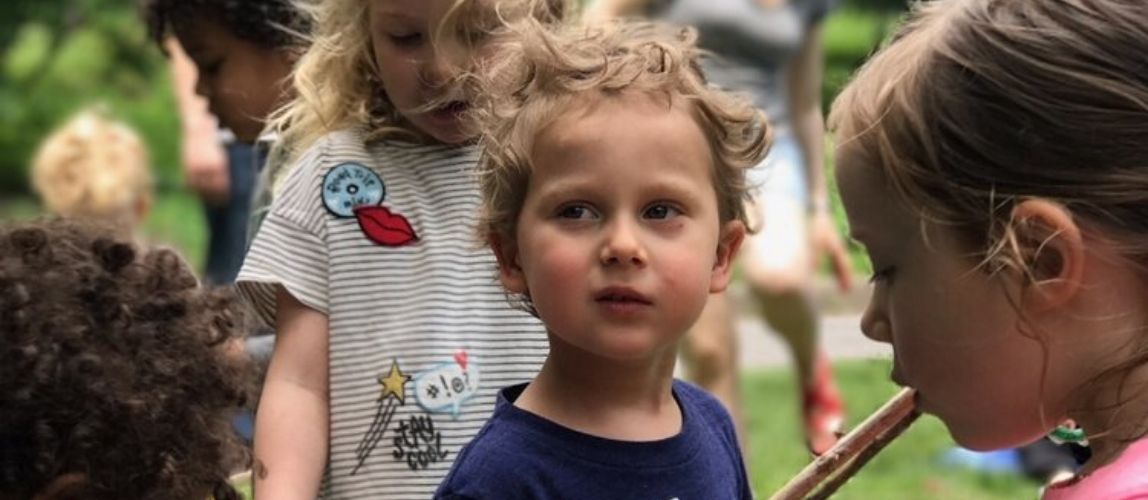When new groups of young children come together it can sometimes be hard to see how their play is social. They can appear like a series of little islands, each doing their own thing. With some children, it may seem like they always opt for island mode, planting themselves on the periphery as a matter of preference. You start to wonder: "With so many friends right here, why are they not playing together?" The trick is, they are.
It can be hard to understand what it’s like to play—or experience anything—as a young child. The mind of early childhood is so different from our adult minds, and even our memories are unreliable, typically starting with our eight-year-old or even older selves. So, unless you are an early childhood expert, it’s understandable that the subtle-but-steady way kids develop their capacity for social play can fly under your radar.
When I ask parents: "What does social play in a group of kids look like?" Their answers commonly include keywords like “sharing, cooperation, pretending and working together.” One parent once told me play was social when “the kids are figuring it all out together—talking, laughing, and making believe.” Her description resonates with my own memories of playing fairies in the woods or one of many variations of capture the flag with the other kids in my neighborhood.
Although her description and my memories are indeed social play, they reflect a relatively high level of it. There were several stages of social play and development that we worked through to arrive at this rather complex, interdependent play. In the 1930s, researcher Mildred Parten studied preschool ages children while engaged in free play, and she conceived of five stages of social play that are still often referenced today. To Parten, as children play together they learn to relate to one another and, in turn, develop increasingly complex play interactions. To Parten, the play we described above is cooperative or socio-dramatic play, and it is the most advanced of her five stages.
The five stages that precede socio-dramatic/cooperative play include:
- Unoccupied Play—A child is not engaged in particular play but rather random movements and observation.
- Solitary Play—A child plays on his own, using different materials than those around him.
- Onlooker Play—A child plays within observation distance, responding emotionally or even verbally to the play of others, but without getting directly involved.
- Parallel Play—Children play alongside one another, using similar materials, but without an attempt to influence their neighbor’s play.
- Associative Play—Children play together, engaging in a similar activity, communicating with one another about shared objects, and even mimicking one another’s actions. Individual interests still guide each child’s play, not a common vision or story.

These five stages offer young children the opportunity to hone social skills and build their capacity for the kind of social play of our memories—and often the kind that adults expect to see from them in a social environment. Each stage is valuable and deserves its due time and space. In the life of young children, there is no rush to move through these stages, as learning is taking place in each of them.
And, even though Mildred Parten presented these as a linear progression, children can and do move between them. For example, for many kids who have greater capacity, choosing to play as an onlooker in a brand new group situation is not only comfortable, it’s advantageous. The chance to get the lay of the land from just alongside the group gives a child the chance to enter into higher levels of play once they have all of the information they need to really thrive. Not a bad approach.
Plus, even if children appear as if they are not “engaging” with other kids, they are absorbing and learning from one another. If you look and listen carefully, you often see the ideas, approaches and even language that other children in their play group use emerge in your child’s individual play—exciting evidence that kids impact one another even before they play in fully cooperative ways.
Just being aware that these stages exists helps us see the social value in what might seem less than social play. It's easy to feel eager to see our children make the kind of buddies and enjoy the kind of cooperative play we so fondly recall. But, when we recognize and give time to each of the stages of social play, we give kids the opportunity to build a solid foundation that can support the years of capture the flag still to come.
